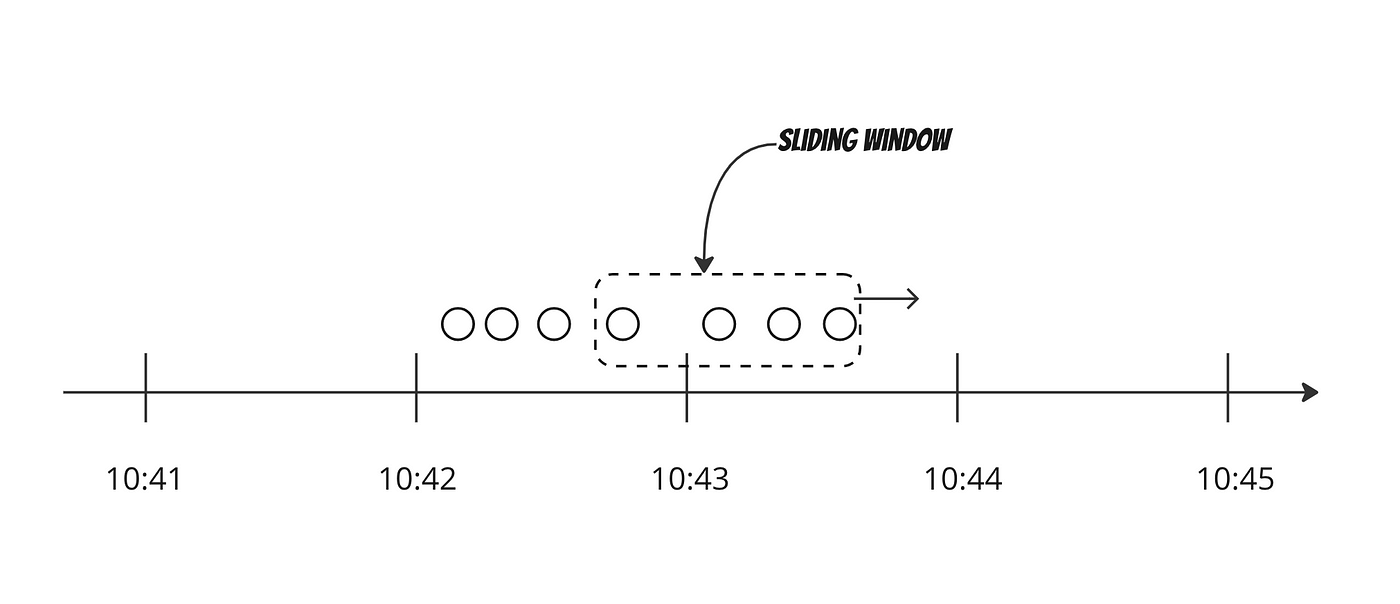Rate Limiting Algorithms: Sliding Window
Rate Limiting Algorithms: Sliding Window
Rate limiting is a mechanism used to control the number of requests that a client can perform in a given period of time. Its primary goals are to protect systems from overload, prevent abuse (such as brute-force attacks or API misuse).
Here are some common rate limiting algorithms:
- Fixed Window
- Sliding Window
- Token Bucket
- Leaky Bucket
In this post, we will look at the “Sliding Window” algorithm.
Sliding Window Algorithm
The Sliding Window algorithm is rate limiting technique that continuously tracks the number of requests over a moving time interval rather than relying on fixed, discrete time slots.
The simple implementation is as follows:
1
2
3
4
5
6
7
8
9
10
11
12
13
14
15
16
17
18
19
20
21
22
23
24
25
26
27
28
29
30
31
32
33
34
35
36
37
38
39
40
41
42
43
44
45
46
import Foundation
class SlidingWindowRateLimiter {
let limit: Int
let windowSize: Int
private var requestTimestamps: [TimeInterval] = [] // Logs each allowed request timestamp
init(limit: Int, windowSize: Int) {
self.limit = limit
self.windowSize = windowSize
}
func allowRequest(_ timestamp: TimeInterval) -> Bool {
// Remove old timestamps that are out of the sliding window.
// Keep only those timestamps that are within (timestamp - windowSize, timestamp]
while let first = requestTimestamps.first, first <= timestamp - TimeInterval(windowSize) {
requestTimestamps.removeFirst()
}
// Check if the number of requests in the sliding window is less than the limit.
let currentCount = requestTimestamps.count
if currentCount < limit {
requestTimestamps.append(timestamp)
return true
} else {
return false
}
}
}
let timestamps = [1.1, 1.5, 1.7, 1.8, 1.9, 3.0, 3.1]
let limiter = SlidingWindowRateLimiter(limit: 3, windowSize: 2)
for timestamp in timestamps {
let result = limiter.allowRequest(timestamp)
print("allowRequest(\(timestamp)) == \(result)")
}
// allowRequest(1.1) == true
// allowRequest(1.5) == true
// allowRequest(1.7) == true
// allowRequest(1.8) == false
// allowRequest(1.9) == false
// allowRequest(3.0) == false
// allowRequest(3.1) == true
Pros and Cons
- Pros
- Provides very precise rate limiting.
- Avoids the burstiness that can occur at the boundaries of fixed windows.
- Cons
- Can be memory intensive if there are many requests because it stores each individual timestamp.
This post is licensed under CC BY 4.0 by the author.
